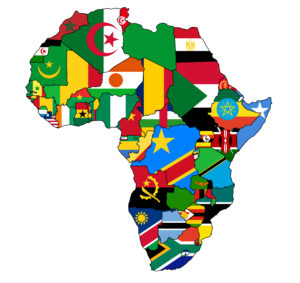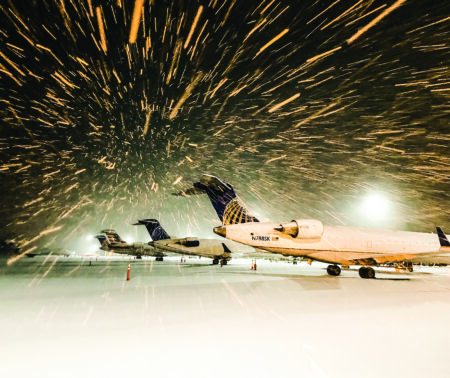The last year has seen business aviation in Africa build momentum. Many of the continent’s airlines were grounded because of Covid-19 and customers have turned to private aviation to fill the gaps.
“Ironically in Africa the pandemic has had a positive effect on business aviation as governments, legislators, regulators, the business community, and even the commercial airlines have realized the real value and benefits of business aviation in terms of efficiency, convenience, and flexibility,” says Helina Teshome, managing director, Krimson Aviation, an aviation service provider based in Ethiopia.
“For Krimson I can honestly say the last 18 months has seen growth for us. Key to note however is that the motivations for flying have been different.”
Throughout the ongoing pandemic business aviation in Africa has supported cargo flights, medevacs, repatriations, diplomatic flights, as well as moving crew and technical teams around, and more recently reintroduced international business flights.
“The movements have highlighted that business aviation is more than just an industry supporting executives and shown that in Africa it complements the commercial services through interlining,” says Teshome.
Business aviation is a small but essential transport pillar in Africa, supporting a basic level of mobility and stability.
“Emergency services, freight forwarders, shuttle services supporting the hydrocarbon and mining industries, humanitarian agencies, crop dusting and anti-poaching organizations, pest and wild-fire spotter aircraft, high-net worth tourists, and international heads of state depend on the sector,” says Teshome. “Business aviation also supports growing African economies.”
“At the height of the pandemic, we were responsible for generating most of the international flights entering Africa. We also found ourselves supporting more unusual flights. Cargo, medevac and shuttle-type charter requests became the norm for a while,” says James Foster, COO of Vertis Aviation, which has an office in South Africa.
“It has stimulated interest in business aviation as a regular means of transport in a new set of customers. We also welcomed back some customers that had switched to using commercial aviation, but returned to business aviation because of the personal health security it delivers.”
JP Fourie is vice chair of the African Business Aviation Association. He says that the disparate state of African nations created extra challenges during the pandemic. “Countries were closing and opening their borders in a haphazard fashion,” he says.”It caused great distress.
“We then saw much increased initial interest in business aviation as a safe bubble solution, but the overwhelming conclusion from operators is that this has come in spurts and fits. Dependant on the segment you operate in, the numbers seem to vary between 40 to 70% of the prior Covid-19 norm at the moment.”
Preparation is key
There are many challenges to private aviation companies in Africa. Permit sourcing, money movement, maintenance resources, sourcing reliable and current information, access to reliable ground handling, services and catering and fuel price instability can cause issues for clients when traveling.
“Accessing permits can be notoriously difficult and requires significant effort. It is often difficult to understand how it works when the continent is made up of some 54 nations, each with its own understanding of business aviation and differing approaches by the national regulators,” says Teshome.
“Africa has yet to establish a single regulatory airspace and regulations surrounding routing, which adds to the complexity, although the African Union initiative, the Single African Air Transport Market does provide the guidelines to establish an African ‘Open Sky’.”
A growing number of African Civil Aviation Authorities are supporting online permit applications. But many do not and it can take up to three days and substantial paperwork to obtain a permit.
“Aircraft licenses, crew details and passenger passports may be requested before being passed to the right department. Even simple details like finding the right telephone number or email to make the application can slow the process,” explains Teshome.
“Medevac flights are often treated differently. It is not unusual for more information to be required, especially when aircraft are carrying non-aviation equipment or pharmaceutical products. Delays invariably relate to a lack of understanding of this type of flight. We are currently working with the Ethiopian government to launch our own aero-medical services to improve efficiencies in our region to address the problems,” says Teshome.
Fees

The cost of landing and overfly permits also varies by country and daily. According to Teshome, inconsistency is a constant in Africa. “One nation may not ask for a fee, yet its neighbor might want several hundred US dollars just to apply, and a subsequent fee in the thousands for a permit.
“It makes sourcing permits difficult, which is why having a local representative is important,” says Teshome.
“We must manage the expectations of our clients more in Africa, particularly those who are new to flying on the continent. Catering, timing, access to services, the perception of business aviation can all make a difference to the client’s expectations. We have to consistently try and be sure to think one step ahead,” says Foster.
“Finding the right equipment to support charter requirements can be challenging because the continent is so vast. This situation is changing but it can be limiting on occasion. We always like to say yes to business, but we will only do so if we can find the right aircraft with the right crew.
“Communications can often be difficult with networks failing and unstable internet connectivity. We try and prepare for all situations to avoid too much frustration for our customers, crew and ourselves.”
A positive from the pandemic is that it has encouraged some nations to advance their online permit application processes. “Africa is also making great strides in modernizing its air traffic management which has led to significant improvements in the permit process. Navigation aids are being upgraded to meet the needs of current flight-deck avionics. The introduction of online permit applications has resulted in streamlining the application for some basic requirements,” says Teshome.
The fees, availability and structure of fuel purchasing also varies across the regions. “As with many elements in business aviation fuel prices are fluid. This is not related to service providers trying to take advantage, but purely because the macro-African landscape is so dynamic that costs, services, capabilities, and pricing can change daily,” says Teshome.
Fuel fees will change according to the regional, international and global economics. “Unfortunately, the strong regional oil and gas industry does not translate to competitive fees,” she adds.
Infrastructure woes
When it comes to infrastructure for business aviation in Africa, there is still much room for growth.
“We are seeing many changes across the continent as more and more countries become users of business aviation. But there are limited FBOs and there are very few experienced business aviation handlers,” says Foster.
“With just over 620 airports supporting paved runways of 5000ft or more there is a long way to go. There are only a handful of FBOs that deliver international level standards. Most business aviation flights are processed through regular terminals, which can result in limited security services, reduced discretion and unnecessary complexity that can compromise expected service levels,” says Teshome.
Maintenance support is also not as accessible as it is in Europe or the USA, which can be problematic if unexpected problems occur.
“Access to maintenance is a challenge but again we see more companies developing MRO services. Over the last decade we have seen the sector gather momentum. The infrastructure will take a long time to meet the same standards as more developed business aviation regions, but it is moving in the right direction,” says Foster.
“OEMs are investing where feasible. However, other factors include a lack of understanding of business aviation requirements and customs delaying parts from getting to where they are needed on time. While there is an increasing number of manufacturers’ authorized service centers and maintenance companies being established across the continent, the access to these resources is not always easy, specifically for AOG situations,” says Teshome.
“However, we are seeing more interest from governments for private-public partnerships to address infrastructure challenges. In Ethiopia we have seen a response to the demand with the Government giving approval for private investment to improve infrastructure. We firmly believe that as the understanding of the value of business aviation increases so will collaboration between the various organizations needed to evolve the industry.”
Keeping the momentum

After the progress made in the last 12 months, it’s important that companies in Africa have a plan to maintain momentum to ensure the industry reaches its full potential post-pandemic.
“For the rest of 2021 we are maintaining our business by supporting our existing clients. We now operate in 15 countries in Africa including Zimbabwe, Tanzania, and the Central African Republic,” says Teshome. “Our aim is to expand further and we are looking to build on the strong foundations of our business in the horn of Africa and beyond. Movements are expected to increase in that region and the western regions.”
“Much of the commercial network is still grounded so business aviation is filling a much-needed gap,” says Foster. “The outcome of this is more people are becoming familiar with the benefits of business aviation, which in turn is stimulating more customers. Mining, hydrocarbon, agriculture, communications, and construction are all driving a rise in private aviation,” says Foster.
But when it comes to planning a trip to Africa, unfortunately there is no one size fits all strategy.
“Our advice to clients is to always expect the unexpected and remain patient. Business aviation operations in Africa have to be dynamic with services, capabilities, and associated fees changing daily across the continent – even within the same countries,” says Teshome.
“Inflight services rarely meet the standards international travelers are used to. Many airports do not offer catering for aviation so ground handlers may have to visit local hotels to source meals which results in diverse quality.
“Making payments can be problematic as credit card systems don’t always work. Cross-border transactions can be restricted, and online-banking requires consistent internet access, which is often inconsistent depending on where you are. Always have a plan b, c and possibly d!”
“Patience is a good attribute to have,” agrees Foster. “We always say to customers and crew that this will help in the overall experience. Expect the unexpected too, but that can be said of business aviation everywhere and that is what makes it interesting.”
“But don’t let the challenges put you off. We advise our clients to plan ahead, be prepared, ensure all correct documentation is up to date and accessible. Ensure you know exactly what the on the ground situation is at the destination you are flying to. Preparation and the right attitude are key to rising to the challenges in Africa.”
Despite the difficulties compared to elsewhere in the world, Fourie is positive about the future. “We do not have the vaccination coverage and high established resistance. Our infection rates are vastly different in almost every one of the 54 countries.
“As a whole the continent is not yet experiencing the predicted upswing back to normality. Yet, the indicators are there that in time, the rumbling along the bottom will end, and the tide will lift us all. When that will be, we don’t know, but 2024 does not seem as unlikely a bet as it did at the beginning of this roller coaster ride.”





